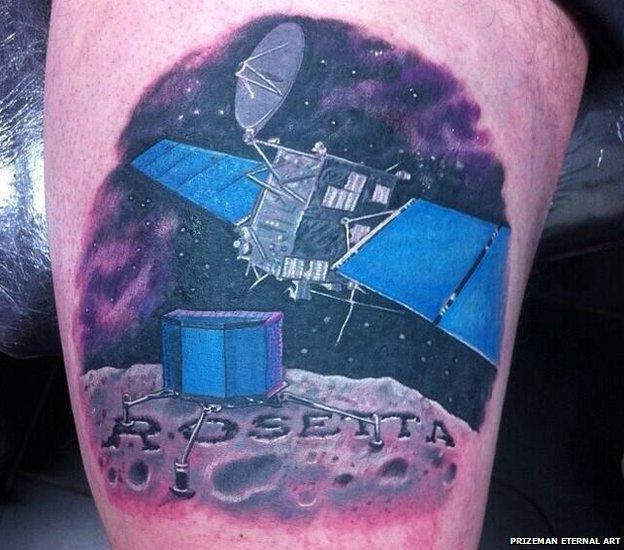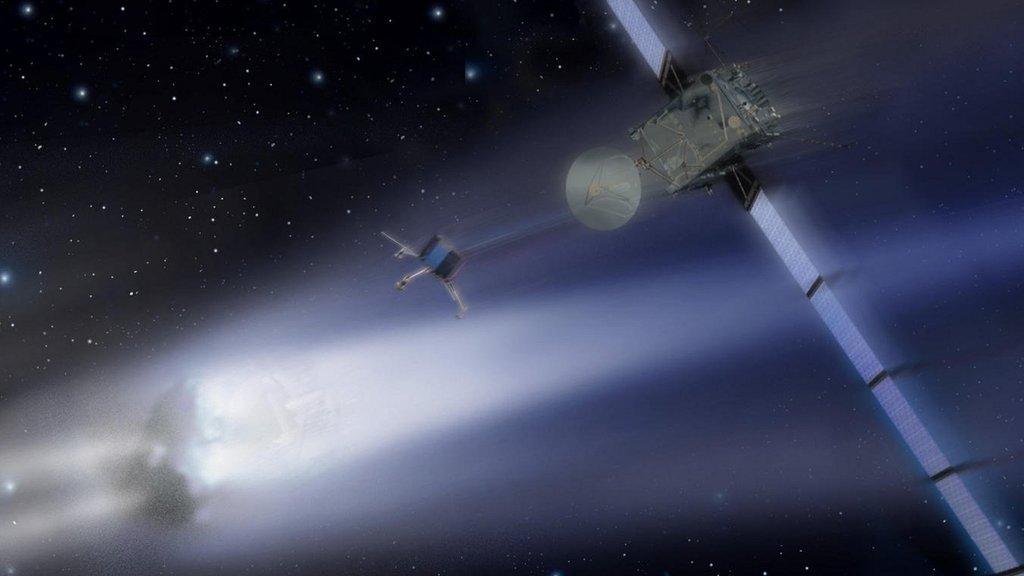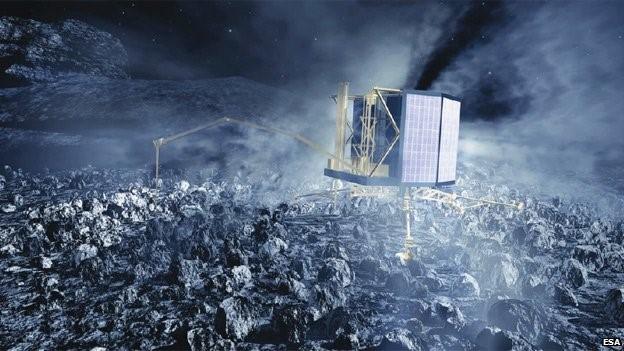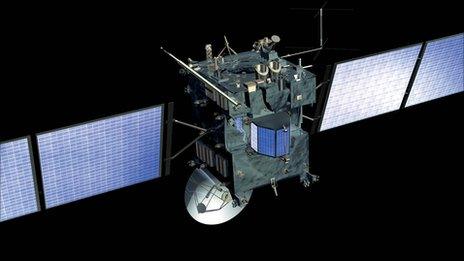Comet-chaser Rosetta's instruments come alive
- Published

Rosetta will attempt to put the Philae lander on the comet's surface in November
The Rosetta probe has started turning on its instruments.
After coming out of a near three-year, deep-space hibernation in January, the satellite now has sufficient power to check out its science payload.
The spacecraft is currently about 675 million km from Earth, external, and continues to close in on its comet quarry.
Rosetta should arrive at the icy body in early August, when it will then start mapping the object to find a safe spot to put down its little lander.
This craft, known as Philae, is piggy-backing the main probe, and was set to receive its wake-up commands on Friday. It will be another week, however, before they are actioned.
Dr Matt Taylor, the European Space Agency's Rosetta project scientist, told BBC News: "The mission as a whole had this big emotional moment in January when the spacecraft was woken up.
"Now, individual teams must experience something similar again as each one of Rosetta's 11 instruments is turned on for testing."
The first item to be brought back online was the camera system: Osiris, external.
This is the equipment that will most engage the public as it acquires the pictures of Comet 67P/Churyumov-Gerasimenko.
The second instrument listed for switch-on was Alice, a spectrometer, external that will be used to study the gases streaming away from the 4km-wide ball of ice and dust.
It will take the rest of March and all of April for controllers at Esa's operations centre in Darmstadt, Germany, to work through the entire instrument package.
Although the tight constraints on power consumption have eased somewhat since the January wake-up, Rosetta is still roughly 640 million km from the Sun. This means the careful approach to energy management continues.
"The fantastic news after hibernation is that the solar arrays haven't degraded, so we are in an optimal state for power," explained Sylvain Lodiot, Rosetta's deputy spacecraft operations manager. "But the situation is still marginal and we cannot yet run the instruments in parallel."
Most of the instruments will be switched off again immediately after their check-out.
The key exception is Osiris. It will stay on because it is needed to help plot the precise position of 67P on the sky. This leads to the next big event in the mission - the major manoeuvre that will start to refine Rosetta's trajectory to the comet.
This will be initiated on 21 May with a seven-hour, 21-minute burn on the spacecraft's thrusters.
A further eight burns are then planned over the summer, with Rosetta set to go into orbit around 67P in the first week of August.
Dr Taylor has been preparing himself this week for the rendezvous with a visit to a tattoo studio.

The artwork was completed this week in a five-hour sitting
He now has Rosetta, Philae and 67P pictured on his thigh.
"When I arrived on the project, I promised I'd do it. I'd had one done for Esa's Cluster mission, and when Rosetta came out of hibernation, I said, 'right, let's get it done now, external'.
"The place where I go is run by an old friend from school. He's done all my tattoos."
Rosetta is being billed as the big space event of 2014. The plan is for the probe to escort 67P as it moves closer towards the Sun, monitoring the changes that take place on the body. The Philae lander will report changes that occur at the surface.
Comets - giant "dirty snowballs", as some have called them - are believed to contain materials that have remained largely unchanged since the formation of the Solar System.
Rosetta's data should give researchers some fresh insights, therefore, on how our local space environment has changed during the past 4.6bn years.

Jonathan.Amos-INTERNET@bbc.co.uk and follow me on Twitter: @BBCAmos, external
- Published20 January 2014

- Published10 December 2013

- Published18 September 2013
- Published29 March 2012
- Published9 June 2011

- Published13 October 2010
- Published10 July 2010